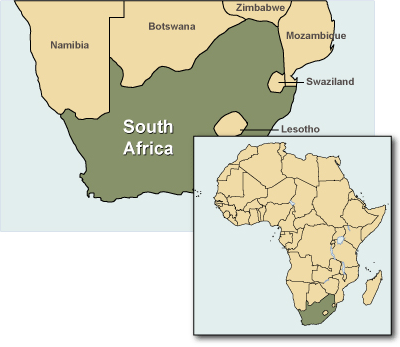South Africa

South Africa, located on the southern tip of the mainland, borders both the Atlantic and Indian Oceans. Its climate varies from arid in the northwest to tropical in the east along its border with Mozambique.
Despite being one of the most economically advanced African nations, South Africa faces many major health challenges. For example, the World Health Organization (WHO) estimates that the country has the worst prevalence of tuberculosis (TB) in the world. In addition, UNAIDS estimates that approximately 5.4 million South Africans are HIV-positive, and recent reports have suggested that the prevalence is climbing.
Drug-resistant malaria is also a growing health concern in the country, while schistosomiasis, endemic in rivers in the eastern part of the country, continues to have a debilitating impact on rural South African populations.
NIAID-Funded Activities
NIAID funds many projects in South Africa, most of which involve HIV/AIDS. The Institute also supports prevention, treatment, and epidemiologic studies on TB and malaria.
Scientific Advances
South African Study Shows that Treating HIV-Infected Infants Early Helps Them Live Longer
Hundreds of thousands of babies around the world are born each year with HIV—more than half a million in 2006 alone. Caring for these children is complicated by the fact that their immune systems are not fully developed in the first year of life, which makes them especially susceptible to rapid HIV disease progression and death. The standard of HIV care in many parts of the world is to treat infants with antiretroviral therapy—but only after they show signs of illness or a weakened immune system.
In 2007, results from an NIAID-supported trial in South Africa suggested that more HIV-infected infants survive if they are given therapy early on, regardless of their apparent state of health. The trial, called the Children with HIV Early Antiretroviral Therapy (CHER) study, helped form the basis for new WHO guidelines, which recommend that all HIV-infected infants under the age of 12 months be treated with antiretroviral therapy.
Read more about the CHER study.
Related Links
Government
Non-government
- World Health Organization (WHO) information on South Africa
back to top